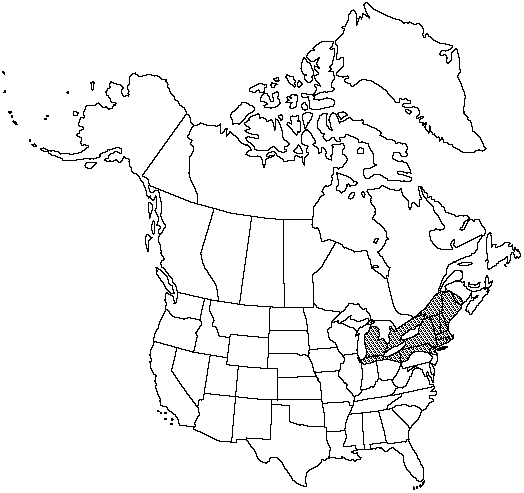Difference between revisions of "Dryopteris clintoniana"
Proc. Staten Island Assoc. Arts 1: 64. 1906.
imported>Volume Importer |
RevisionBot (talk | contribs) m (Bot: Adding category Revised Since Print) |
||
| Line 95: | Line 95: | ||
}}<!-- | }}<!-- | ||
| − | -->[[Category:Treatment]][[Category:Dryopteris]] | + | --> |
| + | |||
| + | [[Category:Treatment]] | ||
| + | [[Category:Dryopteris]] | ||
| + | [[Category:Revised Since Print]] | ||
Latest revision as of 14:31, 15 December 2020
Leaves dimorphic, 45–100 × 12–20 cm; fertile leaves dying back in winter; sterile leaves 1–several, smaller, green through winter. Petiole 1/4–1/3 length of leaf, scaly at least at base; scales scattered, tan, sometimes with dark-brown center. Blade green, lanceolate, with nearly parallel sides, pinnate-pinnatifid, herbaceous, not glandular. Pinnae of fertile leaves twisted out of plane of blade but not fully perpendicular to it, narrowly elongate-deltate; basal pinnae narrowly elongate-deltate, much reduced; basal pinnules longer than or equal to adjacent pinnules, basal basiscopic pinnule and basal acroscopic pinnule equal; pinnule margins serrate or biserrate, with spiny teeth. Sori midway between midvein and margin of segments. Indusia lacking glands. 2n = 246.
Habitat: Swampy woods
Elevation: 50–600 m
Distribution

N.B., Ont., Que., Conn., Ind., Maine, Mass., Mich., N.H., N.J., N.Y., Ohio, Pa., R.I., Vt.
Discussion
Dryopteris clintoniana is a North American endemic and an allohexaploid derived from D. cristata and D. goldieana. Dryopteris clintoniana hybridizes with six species. Hybrids can be identified by the fairly narrow blades and elongate-deltate proximal pinnae.
Selected References
None.
Lower Taxa
"not" is not a number. "swollen" is not a number."/4lengthofleaf" is not declared as a valid unit of measurement for this property.